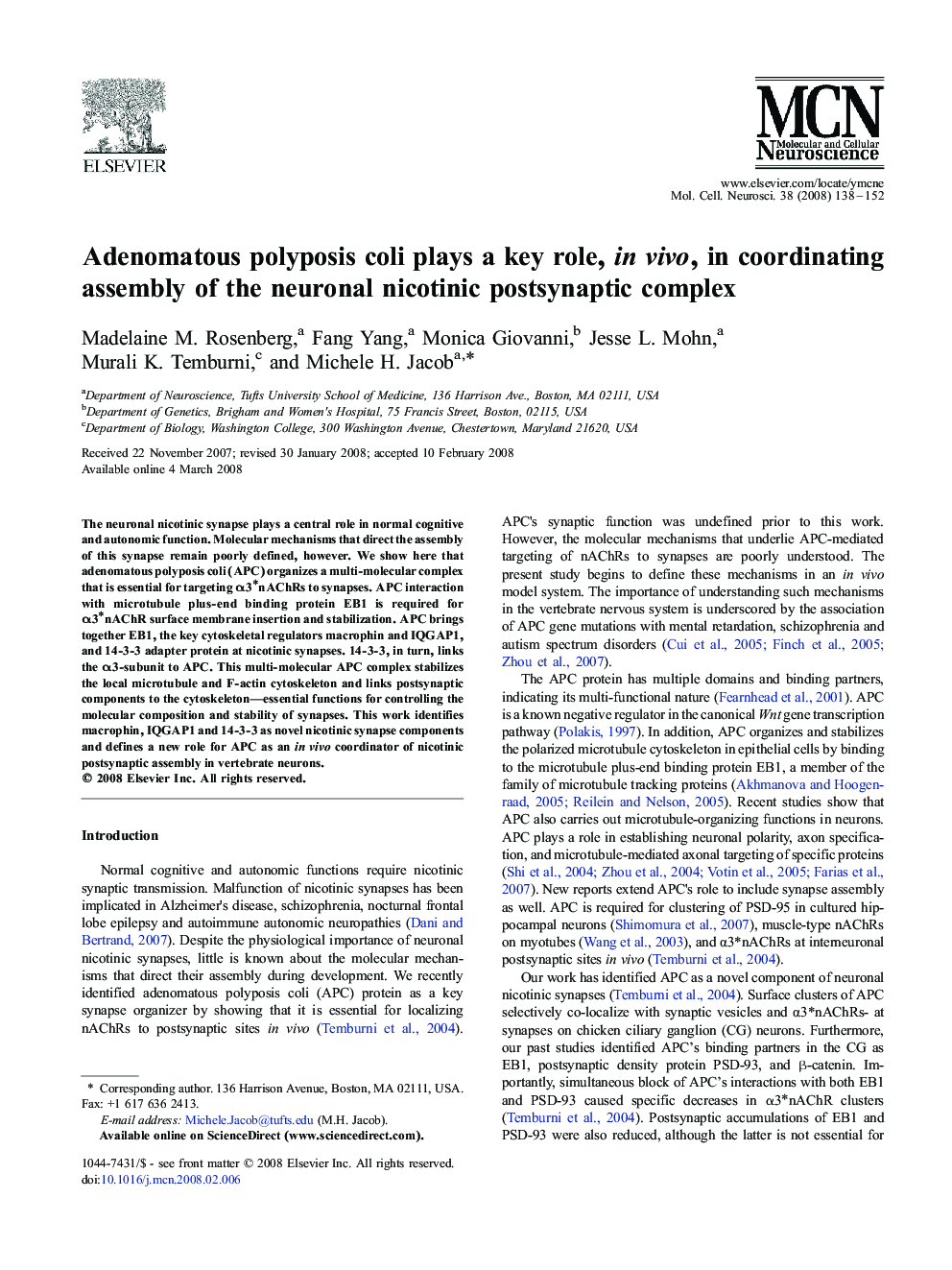| Article ID | Journal | Published Year | Pages | File Type |
|---|---|---|---|---|
| 2199101 | Molecular and Cellular Neuroscience | 2008 | 15 Pages |
The neuronal nicotinic synapse plays a central role in normal cognitive and autonomic function. Molecular mechanisms that direct the assembly of this synapse remain poorly defined, however. We show here that adenomatous polyposis coli (APC) organizes a multi-molecular complex that is essential for targeting α3⁎nAChRs to synapses. APC interaction with microtubule plus-end binding protein EB1 is required for α3⁎nAChR surface membrane insertion and stabilization. APC brings together EB1, the key cytoskeletal regulators macrophin and IQGAP1, and 14-3-3 adapter protein at nicotinic synapses. 14-3-3, in turn, links the α3-subunit to APC. This multi-molecular APC complex stabilizes the local microtubule and F-actin cytoskeleton and links postsynaptic components to the cytoskeleton—essential functions for controlling the molecular composition and stability of synapses. This work identifies macrophin, IQGAP1 and 14-3-3 as novel nicotinic synapse components and defines a new role for APC as an in vivo coordinator of nicotinic postsynaptic assembly in vertebrate neurons.
